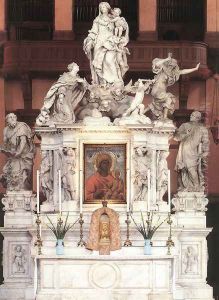Josse De Corte Paintings
Josse de Corte, also known as Giuseppe Cortese or Iseppo da Cortona, was a Flemish sculptor who was prominent in the 17th century. Born in 1627 in Ypres, Flanders, which was then part of the Spanish Netherlands, he is known for his work in the Baroque style, which was characterized by dramatic expression, movement, and an emphasis on direct emotional appeal. His sculptures often reflected the grandeur and dynamism that were hallmarks of the Baroque era.
De Corte moved to Italy to study and work, which was a common practice among Northern European artists seeking to learn from the Renaissance and Baroque masters. He settled in Venice, which was a major center of art and culture during the period. In Venice, he made a significant impact with his work and became noted for his skill in sculpting figures with a strong sense of motion and emotion, often using marble as his medium.
Josse de Corte's work was influenced by both his Flemish roots and the Italian environment in which he was immersed. His sculptures show a blend of the robust, naturalistic detail characteristic of Flemish art and the flowing lines and grand gestures of Italian Baroque. Unfortunately, despite his notable skill, De Corte did not achieve the same level of fame as some of his contemporaries, and as a result, detailed records of his life and works are not as comprehensive as those of other artists from the period.
He died in 1679 in Venice. While De Corte's work may not be as widely recognized today as that of some other Baroque artists, his contributions to the sculptural traditions of the time were significant, and he remains a respected figure among those who study the art of the Baroque period in the context of both Flemish and Italian art history.
